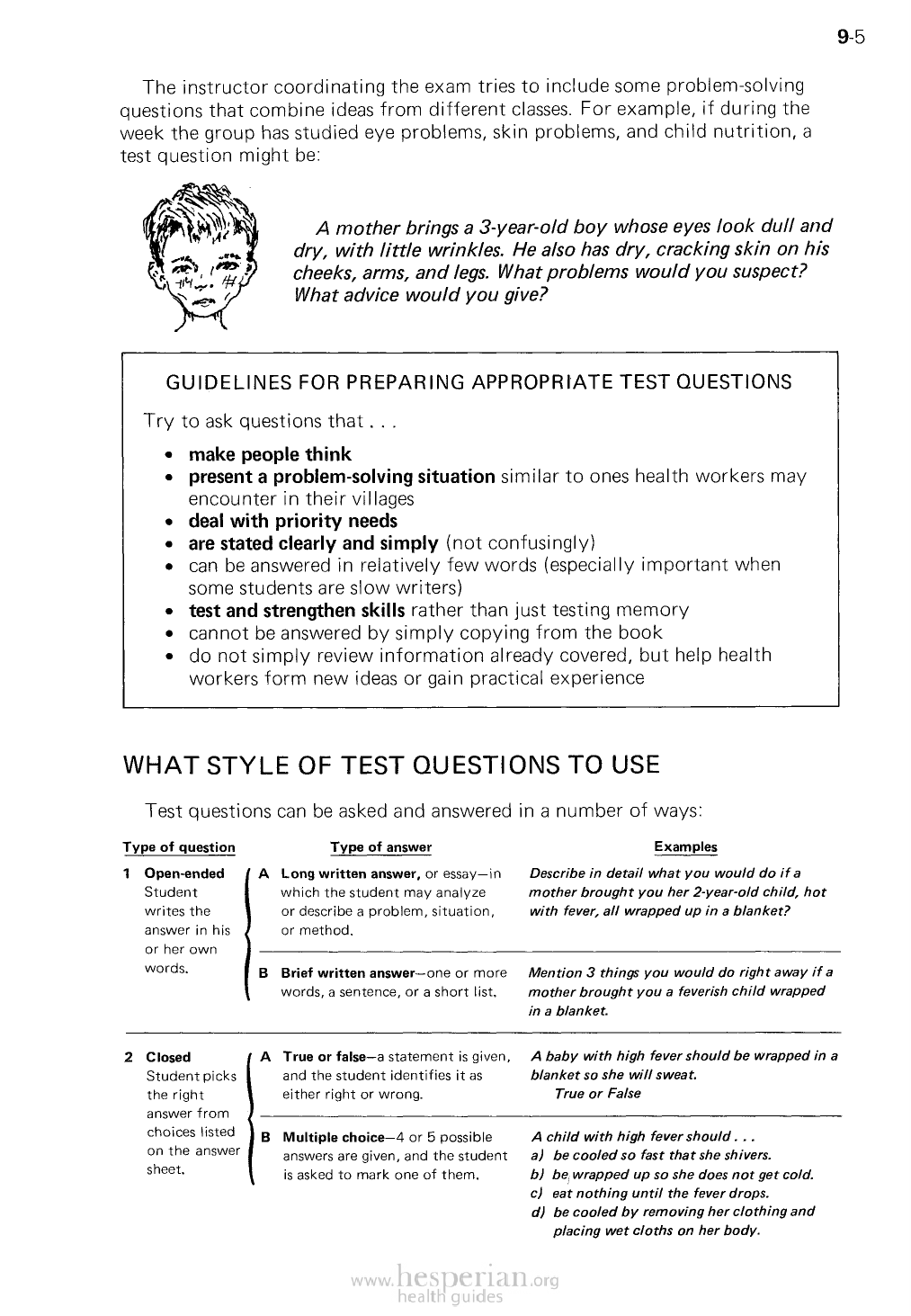
9-5
The instructor coordinating the exam tries to include some problem-solving
questions that combine ideas from different classes. For example, if during the
week the group has studied eye problems, skin problems, and child nutrition, a test
question might be:
A mother brings a 3-year-old boy whose eyes look dull
and dry, with little wrinkles. He also has dry, cracking skin
on his cheeks, arms, and legs. What problems would you
suspect? What advice would you give?
GUIDELINES FOR PREPARING APPROPRIATE TEST QUESTIONS
Try to ask questions that. . .
• make people think
• present a problem-solving situation similar to ones health workers may
encounter in their villages
• deal with priority needs
• are stated clearly and simply (not confusingly)
• can be answered in relatively few words (especially important when some
students are slow writers)
• test and strengthen skills rather than just testing memory
• cannot be answered by simply copying from the book
• do not simply review information already covered, but help health workers
form new ideas or gain practical experience
WHAT STYLE OF TEST QUESTIONS TO USE
Test questions can be asked and answered in a number of ways:
{Type of question
Type of answer
1. Open-ended
Student writes
the answer in
his or her own
words.
A. Long written answer, or essay—
in which the student may analyze
or describe a problem, situation. or
method.
B. Brief written answer—one or
more words, a sentence, or a short
list.
{2. Closed
Student picks
the right
answer from
choices listed
on the answer
sheet.
A. True or false—a statement is
given, and the student identifies it
as either right or wrong.
B. Multiple choice—4 or 5 possible
answers are given, and the student
is asked to mark one of them.
Examples
Describe in detail what you would do if a
mother brought you her 2-year-old child, hot
with fever, all wrapped up in a blanket?
Mention 3 things you would do right away if a
mother brought you a feverish child wrapped
In a blanket.
A baby with high fever should be wrapped in a
blanket so she will sweat.
True or False
A child with high fever should. ..
a) be cooled so fast that she shivers.
b) be wrapped up so she does not get cold.
c) eat nothing until the fever drops.
d) be cooled by removing her clothing and
placing wet cloths on her body.